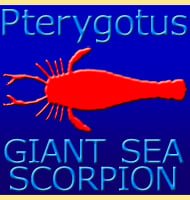In Depth
Though most people have never heard of it, Hyotherium may well be the genus that modern day boar and domestic pigs are descended from. Unfortunately the only fossils that are usually found of Hyotherium are teeth with occasional skulls and lower jaws, so it is difficult to ascertain an exact size range for this pig. What can be said however is that most fossils of Hyotherium are known from early to mid-Miocene deposits in Across Europe. Fossils of Hyotherium are also known from as far away as Pakistan and China, and often these fossils are from later in the Miocene, suggesting that Hyotherium originated in Europe and then radiated out across Asia. Hyotherium and other primitive pigs may have been hunted by predators such as amphicyonids (bear dogs) as well as nimravids (false sabre-toothed cats).
Further Reading
- Description of a Jaw of Hyotherium, from the Pliocene of India. - Quarterly Journal of the Geological Society 43: 19–99. - R. Lydekker - 1887. - Temporal and spatial distribution of Miocene mammals in the western Carpatians (Slovakia). Geologica Carpathica 53(4):269-279. - M. Sabol & P. Holec - 2002.









